At CP+ in Tokyo Nikon were showing their new compact DL24-500 fixed lens, 1″ sensor camera. It might be of interest to video journalists and shooters looking for an all-in-one carry around camera with a large zoom range. It is one of several compact new cameras launched by the company at the show.
As the name suggest the camera features a 35 mm equivalent 24-500mm f2.8-5.6 lens that uses a servo mechanism to zoom. Lens controls are fly-by-wire like almost every other camera of this type. The DL24-500 is a competitor to the popular Sony RX10 II, and just like that camera it can also shoot Ultra HD, HD and 720p resolutions. Also in common with the RX10 II it has a manual exposure control for video.
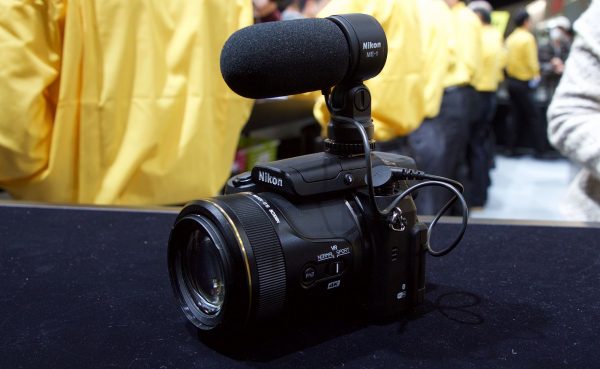
While the DL24-500 looks good on paper it is missing several key things that keep it from being a good multimedia or video journalist camera.
Unlike the the RX10 II though it doesn’t have a constant aperture zoom, Nikon designers have opted for a much longer range instead. The RX10 II has a fixed f2.8 lens with a range of 24-200mm, the Nikon start at f2.8 but drops to f5.6, but extends all the way to a whopping 500mm. From my experience using the camera at CP+ the lens aperture ramps quite quickly, so you shouldn’t expect that the camera will allow you to shoot at f2.8 at anything other than the widest zoom setting. The maximum aperture combined with the relatively small sensor won’t allow this camera to have the same shallow depth of field offered by larger sensor models.
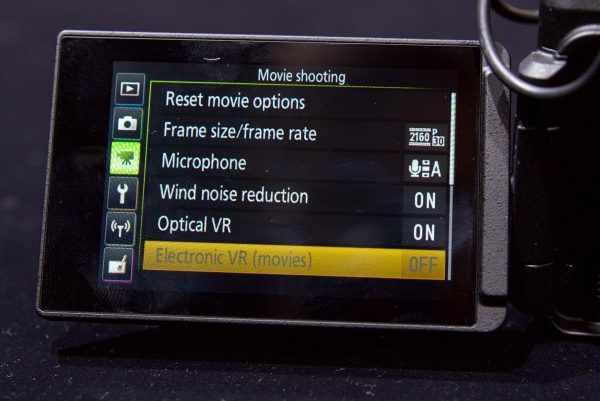
In the audio department the camera does have a 3.5″ mini jack which is conveniently placed on the camera top plate to the left of the viewfinder. This seems a lot less prone to being accidentally damaged than putting it in the normal position sticking out of the camera’s side. It seems strange then, having clearly thought about that, to then extremely limit control of the audio levels in the camera. There is only an auto setting, plus three different level settings (high, middle, and low sensitivity). There is also no headphone jack so you have no way of monitoring audio being recorded in the camera. An optional stereo microphone called the ME-1 is also available, and attaches to the hot shoe mount on top of the camera.
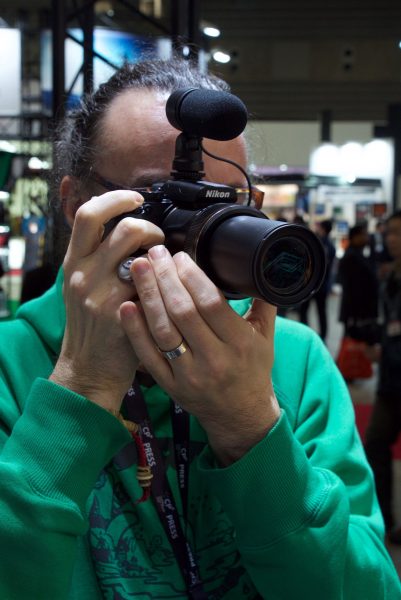
On the positive side is has an excellent OLED articulating screen with six levels of brightness control. I found the screen to be far more impressive than anything found on the Sony a7 series or the RX10 II. It also has a dedicated movie record button in a conveniently located spot that is hard to miss, and the zoom lens had a nice range of variable zoom speeds available depending on how hard you moved the switch.
I found the camera nice to use in the hand and the body construction felt very solid. The auto focus and image stabilisation modes seemed to also work well. On the downside I found the menus and trying to change various functions on the camera a little confusing, but it is nothing that familiarity couldn’t overcome.
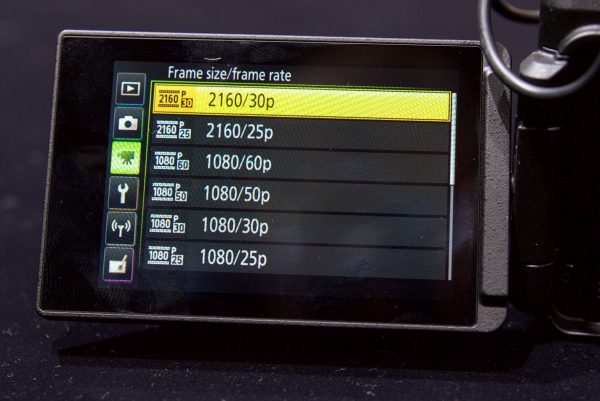
The camera shoots in MPEG-4 H.264, but there is no available information of the bitrate or colour space. I asked Nikon staff at their booth and nobody could tell me what is was. The DL24-500 can record UHD at up to 30P, HD up to 120P, 200fps at 720p, 400fps at 800 x 296p and 1200fps at 400 x 144p. The camera is switchable between most NTSC and PAL frame rates, but strangely there is no 24p available. I could not work out if there was a continous recording time limit on the camera, but in 1080p 60P it was showing ten minutes on the show floor model.
The sensor doesn’t use a optical low-pass filter so it is unclear just how much more and aliasing it with produce in video. The DL24-500 can output uncompressed footage over HDMI for external recording, and according to Nikon, ‘the camera’s processing power effectively eliminates rolling shutter distortion’. There is also a Auto ISO that is claimed to smoothly adjust the exposure to fit varying lighting conditions. Other capabilities include a new Superlapse mode which lets you record moments moments at double speed, time-lapse for condensing vast periods of time into just 10 seconds, and slow motion video for smooth capture of fast-moving scenes. There is also a built-in microphone.
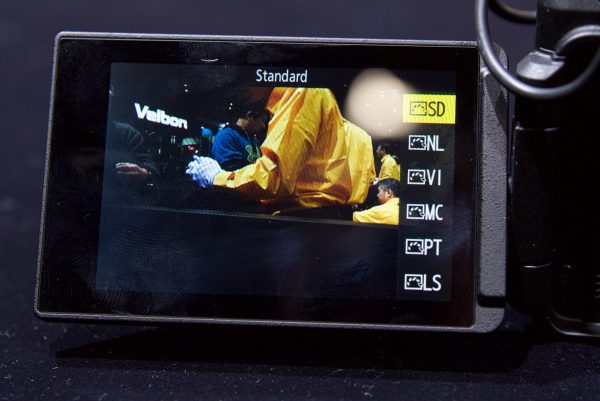
The camera has an ISO range of 160-6400, that can be expanded to 12800. It also has full manual white balance controls as well as various presets available. There are a range of picture profiles you can shoot in, but none of them were particularly flat and there is no Log gamma option.
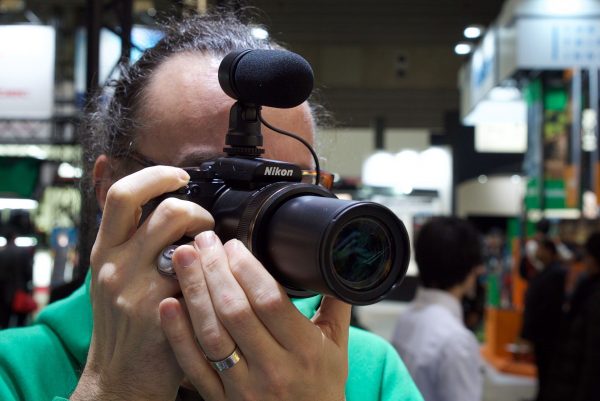
For still photography shooters the camera can continuously shoot at up to 20 fps with autofocus, or a blazingly fast 60 fps with fixed focus. A new Hybrid AF has a wide coverage area with a total of 171 focus points, of which 105 points are phase-detect capable for locking on to moving subjects.
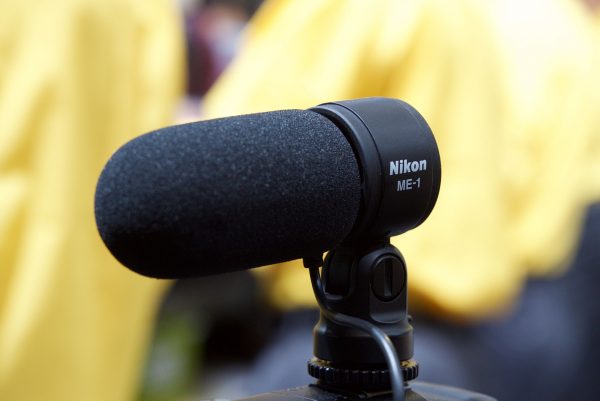
The camera is a good effort from Nikon, but unfortunately for video shooters, the lack of manual audio control, no 24P and no headphone jack will turn a lot of potential buyers away. For video journalists and multimedia shooters the Sony RX10 II or Canon XC10 still look to be better all round solutions.
The DR24-500 will retail for $996.95US and the availability is not yet known.
For more info visit the Nikon website.





